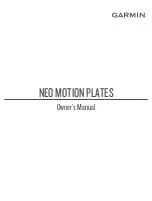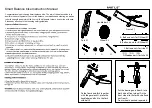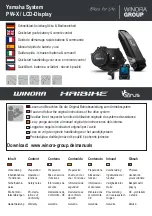
ENGLISH
34
Attitude/Attitude Hybrid Rev.1.0
Note on the sMMI plugs: (Fig.3.15)
If you need to remove the sMMI plugs leading to the
battery at any time, please note the following information
when connecting them again:
•
The plug of the sMMI and the socket on the additional
cable to the battery must be correctly aligned when
connecting.
•
Both parts are a little tricky to connect but this
prevents moisture ingress during operation.
•
Do not kink the attached cables at any time when
connecting the plug and the socket. There is a risk of
the cable breaking.
Thermal management:
A combination of three temperature sensors, an
intelligent software control system and patented air
circulation ensure the motor is optimally cooled. In
practice this means greater and longer output on climbs
or under high (attachment) loads.
Advantage: protection against premature overheating on
long climbs and high loads – longer support on hills,
higher level of efficiency and thereby a lower battery
consumption as the motor is optimally cooled.
About the theory
As with all drives, gearless wheel hub motors are also
optimised to an operating point consisting of speed, load
and output. Our wheel hub motors are designed for
operation in the speed range between 15 km/h and 25
km/h and a normal drive output of 250 watts. In this
speed and performance range they achieve the greatest
efficiency and range, which means that the supplied
energy is optimally converted into drive energy.
Whenever a motor is operated outside of the optimum
operating point, its level of efficiency decreases. This
leads to the fact that the energy is no longer optimally
converted, rather part of the supplied energy is
converted into heat. The range therefore decreases and
the heat needs to be discharged. In the neodrives
motors this heat discharge is achieved via a large
contact area inside the motor (stator carrier) to the
dropout or chain stays of the bicycle frame. In addition,
cooling ribs inside and outside the drive housing ensure
the greatest possible heat exchange with the
surroundings. Heat which cannot be discharged causes
the drive motor to heat up.
The neodrives wheel hub motors monitor both the
supplied energy and the temperatures in the motor. This
enables damage to be prevented as a result of
overheating in an overload situation. However this also
results in the motor performance that is accessible by
the rider. Being reduced to prevent overheating.
Fig.3.15
If a temperature of 80 °C is exceeded in the motor
electronics, the motor control system reduces the input
power and thereby the support. This means that the
higher the temperature increase in the motor, the less
drive output can be accessed and the lower the support
available. When the motor cools down, the energy input
is increased again and the drive output rises. Important:
The motor cannot be damaged by heat build-up. The
temperature symbol (Fig.3.16) only appears when the
power is completely reduced.
Fig.3.16
This regulation of the drive output as a function of the
motor temperature is progressive so that there is always
support but the motor is not damaged by overheating.
In practice
As a result of the points explained above, the day-to-day
practice is dependent on the outside temperature, total
weight, incline, the terrain, cadence, air pressure and
speed. These factors may lead to a temperature being
reached which causes the output or support to be
reduced.
However, this does not mean a fault or failure of the
drive, you can continue to cycle at lower support. In an
extreme case it may cause a brief complete shutdown.
Extreme example: An incline of 10 – 12 % at an altitude
of 500 metres, a total weight of 120 kg, loose terrain, a
maximum assistance level, a speed of < 10 km/h and a
cadence of 60 rpm mean operation in an unfavourable
range at low efficiency and range at simultaneously high
heat generation. This will result in a reduction in the
drive output.
Tip: Ideally, by selecting a lower gear with higher
cadence, the travel mode “Tour” or “Eco”, a reduced
assistance level and/or a short break (in which the drive
can cool down again), you can continue to cycle.
Summary of Contents for Attitude
Page 1: ...Attitude Attitude Hybrid DIRECTIONS FOR USE ADD ON BIKE 000690707 05 ...
Page 48: ...Attitude Power 000690707 14 ADD ON BIKE DIRECTIONS FOR USE ...
Page 66: ...ENGLISH 19 Attitude Power Rev 1 0 Ansmann System Part 1 Ansmann Display ...
Page 75: ...ENGLISH 28 Attitude Power Rev 1 0 ...
Page 76: ...ENGLISH 29 Attitude Power Rev 1 0 Ansmann System Part 2 Ansmann Battery ...
















































